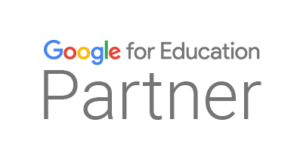Schools today rely on digital platforms more than ever. From virtual classrooms and online assessments to administrative operations, almost every aspect of education depends on a secure network. In this environment, a firewall is often the first line of defense, controlling incoming and outgoing traffic. But as threats become more sophisticated, relying on a firewall alone leaves significant gaps. The strongest protection comes from a layered approach where firewalls work in tandem with other security tools such as endpoint protection like antivirus software, intrusion detection systems, and regular security audits to make sure school digital security is not sacrificed.
This layered defense strategy ensures that if one layer is bypassed, others step in to block, detect, or remediate the threat. For schools, this means safeguarding sensitive student data, preventing malware infections, and maintaining a stable digital learning environment without disruptions.
The Role of Firewalls in School Digital Security
Firewalls act as digital gatekeepers. They monitor traffic moving in and out of the school network, blocking unauthorized access while allowing legitimate communication. For example, a firewall can stop suspicious attempts from external attackers trying to connect with internal servers.
In addition to an enterprise level security schools also need additional tools to detect and respond. This is where a layered security approach becomes essential.
Adding Endpoint Protection
Every device connected to a school network, whether it is a teacher’s laptop, a student’s tablet, or an IoT device such as a smart projector, is a potential entry point for attackers. Endpoint protection solutions strengthen this weak spot by securing devices directly.
Features like real-time monitoring, threat detection, and automatic remediation help ensure that malware or ransomware is stopped before it spreads across the network. When endpoint protection integrates with the firewall, both systems can share intelligence. If a device shows unusual behavior, the firewall can automatically restrict its access, reducing the risk of further compromise.
The Role of Antivirus Software
Antivirus tools scan files, downloads, and applications for known malicious code. They provide an added layer that blocks threats at the device level before they have a chance to reach the firewall or spread to other users.
Integration between antivirus software and the firewall also enhances visibility. For instance, if the antivirus identifies a suspicious file, the firewall can block similar files from entering the network in the future. This cooperative defense reduces the chance of repeated attacks.
Detecting the Undetected with IDS and IPS
Even with firewalls and endpoint protection in place, advanced attacks may still slip through. Intrusion Detection Systems (IDS) and Intrusion Prevention Systems (IPS) are designed to catch unusual behavior within the network. IDS tools monitor traffic patterns and raise alerts when anomalies are detected, while IPS systems can actively block the suspicious traffic.
For schools, this means detecting stealthy attacks like unusual login attempts, data exfiltration, or lateral movement between devices. Integrated with firewalls, IDS and IPS add a deeper level of scrutiny, ensuring threats that escape the perimeter or device layers do not go unnoticed.
The Importance of Regular Security Audits
Technology alone cannot guarantee complete safety. Regular security audits are the layer that ensures all tools are configured correctly and remain effective over time. These audits help identify vulnerabilities, outdated software, misconfigured rules, or overlooked devices that may pose risks.
For example, an audit might reveal that a firewall rule allowing broad access is unnecessarily exposing student records. Or it may highlight endpoints that are missing critical patches. Addressing these issues strengthens every other security layer and ensures compliance with data protection regulations relevant to education.
Practical Steps for Schools to Build a Layered Approach
Building a layered defense strategy does not need to be overwhelming. Schools can begin with a few practical steps:
- Establish firewall as the foundation: Configure it to control traffic, enforce content policies, and log activity.
- Deploy endpoint protection across devices. Ensure all laptops, desktops, and mobile devices have up-to-date security tools.
- Integrate antivirus and firewalls: Allow them to share threat intelligence for stronger detection.
- Add IDS and IPS for deeper monitoring: Use these tools to identify patterns that may indicate hidden attacks.
- Schedule routine security audits: Conduct quarterly or bi-annual assessments to close gaps and maintain compliance.
- Educate staff and students: Train them on safe digital practices, since human error often bypasses even the best technology.
Each step complements the others, gradually creating a robust security framework that evolves with emerging threats.
The Benefits of a Layered Defense in Education
When schools adopt this integrated strategy, the benefits go far beyond IT. A layered defense directly contributes to:
- Protection of sensitive data such as student records, grades, and personal information.
- Reduced downtime from malware or ransomware incidents, ensuring classes run smoothly.
- Improved regulatory compliance, including adherence to laws protecting children’s online safety.
- Peace of mind for administrators, teachers, parents, and students who depend on secure digital learning.
In short, layered security not only protects infrastructure but also builds trust in the educational environment.
Ensuring Safer Digital Learning for Every Student
Firewalls remain an essential cornerstone of school digital security, but they are most effective when part of a broader, integrated defense strategy. By combining firewalls with endpoint protection, antivirus tools, intrusion detection systems, and regular security audits, schools can create a layered defense that adapts to evolving threats.
This proactive approach ensures that even if one line of defense is breached, others are ready to respond. For schools, it means more than just protecting devices. It means safeguarding the future of digital learning and ensuring students can explore, learn, and grow in a safe online environment.




 1st Floor, H-31, Sector 63,
1st Floor, H-31, Sector 63,